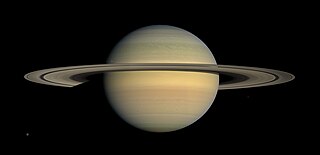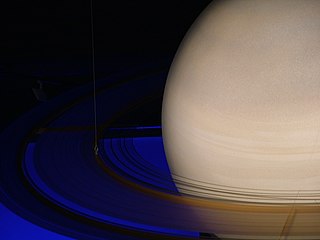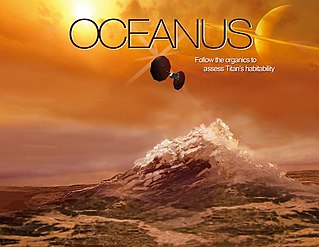Contents
The topic of this article may not meet Wikipedia's notability guideline for stand-alone lists .(May 2017) |
The topic of this article may not meet Wikipedia's notability guideline for stand-alone lists .(May 2017) |

Christiaan Huygens, Lord of Zeelhem, was a Dutch mathematician, physicist, engineer, astronomer, and inventor who is regarded as a key figure in the Scientific Revolution. In physics, Huygens made seminal contributions to optics and mechanics, while as an astronomer he studied the rings of Saturn and discovered its largest moon, Titan. As an engineer and inventor, he improved the design of telescopes and invented the pendulum clock, the most accurate timekeeper for almost 300 years. A talented mathematician and physicist, his works contain the first idealization of a physical problem by a set of mathematical parameters, and the first mathematical and mechanistic explanation of an unobservable physical phenomenon.

Saturn is the sixth planet from the Sun and the second largest in the Solar System, after Jupiter. It is a gas giant, with an average radius of about nine times that of Earth. It has an eighth the average density of Earth, but is over 95 times more massive. Even though Saturn is almost as big as Jupiter, Saturn has less than a third the mass of Jupiter. Saturn orbits the Sun at a distance of 9.59 AU (1,434 million km), with an orbital period of 29.45 years.

Titan is the largest moon of Saturn and the second-largest in the Solar System. It is the only moon known to have an atmosphere denser than the Earth's and is the only known object in space—other than Earth—on which there is clear evidence that stable bodies of liquid exist. Titan is one of seven gravitationally rounded moons of Saturn and the second-most distant among them. Frequently described as a planet-like moon, Titan is 50% larger in diameter than Earth's Moon and 80% more massive. It is the second-largest moon in the Solar System after Jupiter's Ganymede and is larger than Mercury; yet Titan is only 40% as massive as Mercury, because Mercury is mainly iron and rock while much of Titan is ice, which is less dense.

Rhea is the second-largest moon of Saturn and the ninth-largest moon in the Solar System, with a surface area that is comparable to the area of Australia. It is the smallest body in the Solar System for which precise measurements have confirmed a shape consistent with hydrostatic equilibrium. Rhea has a nearly circular orbit around Saturn, but it is also tidally locked, like Saturn's other major moons; that is, it rotates with the same period it revolves (orbits), so one hemisphere always faces towards the planet.

Cassini–Huygens, commonly called Cassini, was a space-research mission by NASA, the European Space Agency (ESA), and the Italian Space Agency (ASI) to send a space probe to study the planet Saturn and its system, including its rings and natural satellites. The Flagship-class robotic spacecraft comprised both NASA's Cassini space probe and ESA's Huygens lander, which landed on Saturn's largest moon, Titan. Cassini was the fourth space probe to visit Saturn and the first to enter its orbit, where it stayed from 2004 to 2017. The two craft took their names from the astronomers Giovanni Cassini and Christiaan Huygens.

Tethys, or Saturn III, is the fifth-largest moon of Saturn, measuring about 1,060 km (660 mi) across. It was discovered by Giovanni Domenico Cassini in 1684, and is named after the titan Tethys of Greek mythology.

Iapetus is the outermost of Saturn's large moons. With an estimated diameter of 1,469 km (913 mi), it is the third-largest moon of Saturn and the eleventh-largest in the Solar System. Named after the Titan Iapetus, the moon was discovered in 1671 by Giovanni Domenico Cassini.

Huygens was an atmospheric entry robotic space probe that landed successfully on Saturn's moon Titan in 2005. Built and operated by the European Space Agency (ESA), launched by NASA, it was part of the Cassini–Huygens mission and became the first spacecraft to land on Titan and the farthest landing from Earth a spacecraft has ever made. The probe was named after the 17th-century Dutch astronomer Christiaan Huygens, who discovered Titan in 1655.

Mimas, also designated Saturn I, is the seventh-largest natural satellite of Saturn. With a mean diameter of 396.4 kilometres or 246.3 miles, Mimas is the smallest astronomical body known to be roughly rounded in shape due to its own gravity. Mimas's low density, 1.15 g/cm3, indicates that it is composed mostly of water ice with only a small amount of rock, and study of Mimas's motion suggests that it may have a liquid ocean beneath its surface ice. The surface of Mimas is heavily cratered and shows little signs of recent geological activity. A notable feature of Mimas's surface is Herschel, one of the largest craters relative to the size of the parent body in the Solar System. Herschel measures 139 kilometres across, about one-third of Mimas's mean diameter, and formed from an extremely energetic impact event. The crater's name is derived from the discoverer of Mimas, William Herschel, in 1789. The moon's presence has created one of the largest 'gaps' in Saturn's ring, named the Cassini Division, due to orbital resonance destabilising the particles' orbit there.
Huygens is a Dutch patronymic surname, meaning "son of Hugo". Most references to "Huygens" are to the polymath Christiaan Huygens. Notable people with the surname include:

This article provides a timeline of the Cassini–Huygens mission. Cassini was a collaboration between the United States' NASA, the European Space Agency ("ESA"), and the Italian Space Agency ("ASI") to send a probe to study the Saturnian system, including the planet, its rings, and its natural satellites. The Flagship-class uncrewed robotic spacecraft comprised both NASA's Cassini probe, and ESA's Huygens lander which was designed to land on Saturn's largest moon, Titan. Cassini was the fourth space probe to visit Saturn and the first to enter its orbit. The craft were named after astronomers Giovanni Cassini and Christiaan Huygens.

The Lunar and Planetary Laboratory (LPL) is a research center for planetary science located in Tucson, Arizona. It is also a graduate school, constituting the Department of Planetary Sciences at the University of Arizona. LPL is one of the world's largest programs dedicated exclusively to planetary science in a university setting. The Lunar and Planetary Lab collection is held at the University of Arizona Special Collections Library.

The exploration of Saturn has been solely performed by crewless probes. Three missions were flybys, which formed an extended foundation of knowledge about the system. The Cassini–Huygens spacecraft, launched in 1997, was in orbit from 2004 to 2017.

Sotra Patera is a prominent depression on Titan, the largest moon of Saturn. It was formerly known as Sotra Facula; the current name was approved on 19 December 2012. It is a possible cryovolcanic caldera 30 km (19 mi) across and 1.7 km (1.1 mi) deep, and is immediately to the east of the largest putative cryovolcanic mountain on Titan, the 1.45 km (0.90 mi) high Doom Mons. Sotra Patera is the deepest known pit on Titan.

The Cassini space probe was deliberately disposed of via a controlled fall into Saturn's atmosphere on September 15, 2017, ending its nearly two-decade-long mission. This method was chosen to prevent biological contamination of any of the moons of Saturn now thought to offer potentially habitable environments. Factors that influenced the mission end method included the amount of rocket fuel left, the health of the spacecraft, and funding for operations on Earth.

Treatise on Light: In Which Are Explained the Causes of That Which Occurs in Reflection & Refraction is a book written by Dutch polymath Christiaan Huygens that was published in French in 1690. The book describes Huygens's conception of the nature of light propagation which makes it possible to explain the laws of geometrical optics shown in Descartes's Dioptrique, which Huygens aimed to replace.

Dragonfly is a planned NASA mission to send a robotic rotorcraft to the surface of Titan, the largest moon of Saturn. It is planned to be launched in July 2028 and arrive in 2034. It would be the first aircraft on Titan and is intended to make the first powered and fully controlled atmospheric flight on any moon, with the intention of studying prebiotic chemistry and extraterrestrial habitability. It would then use its vertical takeoffs and landings (VTOL) capability to move between exploration sites.

Oceanus is a NASA/JPL orbiter mission concept proposed in 2017 for the New Frontiers mission #4, but it was not selected for development. If selected at some future opportunity, Oceanus would travel to Saturn's moon Titan to assess its habitability. Studying Titan would help understand the early Earth and exoplanets which orbit other stars. The mission is named after Oceanus, the Greek god of oceans.

Jani Radebaugh is an American planetary scientist and professor of geology at Brigham Young University who specializes in field studies of planets. Radebaugh's research focuses on Saturn's moon Titan, Jupiter's moon Io, the Earth's Moon, Mars and Pluto. Radebaugh is a Science Team member of the Dragonfly mission to Titan, the IVO Io mission proposal, and the Mars Median project. She was an Associate Team Member of the Cassini-Huygens RADAR instrument from 2008 to 2017, and was a graduate student scientist for Io for the Galileo mission. She does science outreach through her work as an expert contributor to the Science/Discovery program How the Universe Works and other television and radio programs. In December 2012, Radebaugh and her colleagues on the Cassini mission announced the discovery of Vid Flumina, a liquid methane river on Saturn's moon Titan over 320 km (200 mi) long and resembling the Nile river.